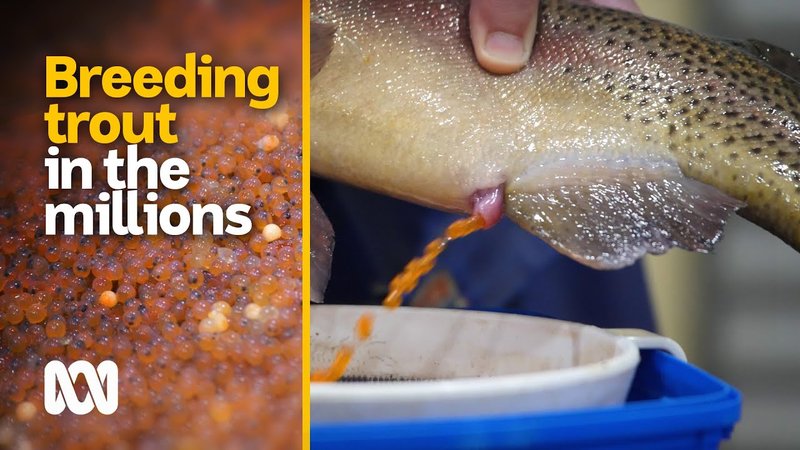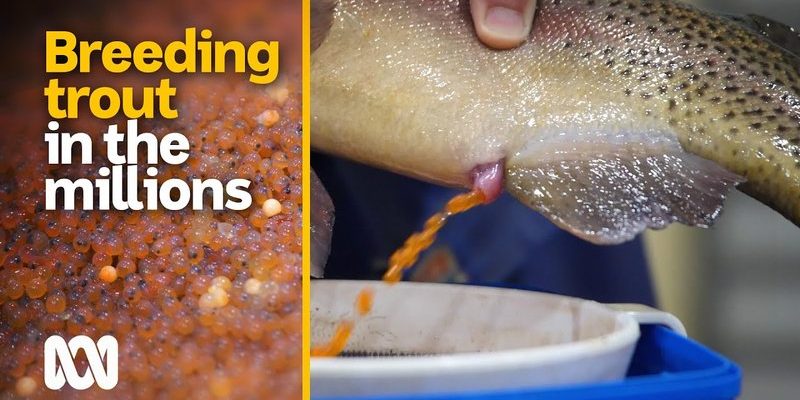
Trout are unique creatures, shaped by their environment and the seasons. If you’ve ever seen the term “spawning,” it might conjure images of fish flopping around in shallow streams, but it’s so much more than that. The process is critical for the trout population and involves a series of well-timed events that ensure the survival of their species. Understanding these stages can shed light on why proper habitat conservation is essential for these beautiful fish.
The Life Cycle of Trout
Trout undergo several distinct stages in their life cycle, starting from eggs to mature adults. Generally, they are born in freshwater streams or rivers, where their journey begins. Trout can be categorized into different species, including rainbow, brook, and brown trout—each with unique characteristics but similar reproductive strategies.
When trout reach sexual maturity, usually between 2 to 4 years of age, they prepare for spawning. This is a time when they undergo physical changes, such as developing vibrant colors and noticeable features like hooked jaws in males, which signal their readiness to breed. Imagine getting all dressed up for a big occasion—that’s precisely what these fish are doing as they prepare for their moment in the spotlight.
Once they’re ready, trout migrate to their spawning grounds, often where they hatched as fry. This connection to their birthplace is essential because it offers a familiar environment for laying eggs. Think of it as a sentimental journey home, where the past collides with their future.
Spawning Behavior
The actual spawning process is quite a spectacle. Trout typically spawn during late fall to early spring, depending on the species and geographic location. The water temperature plays a significant role here; most trout prefer temperatures between 40°F to 50°F for spawning. This period is crucial because if the water is too warm or too cold, it can negatively affect egg development.
During spawning, male trout compete for the attention of females, often engaging in elaborate displays of strength and color. The female usually digs a nest, called a “redd,” in the gravel where she will lay her eggs. Here’s where it gets fascinating: after the female lays her eggs, the male fertilizes them by releasing his milt over them. This synchronized action is nature’s way of ensuring that the next generation has the best chance of survival. Imagine how intense that moment must be—like the climax of a romantic movie where everything depends on perfect timing.
After fertilization, the eggs are covered with gravel to protect them from predators. They won’t hatch for several weeks to months, depending on environmental conditions. The protective gravel is like a cozy blanket, giving them a safe space to develop until they’re ready to face the world.
The Importance of Habitat
Trout are very sensitive to their environment, which means that the health of their habitats is crucial for successful breeding and reproduction. Clean, cool water with adequate oxygen levels promotes healthy spawning. If a river or stream becomes polluted or habitat gets destroyed, it can have devastating effects on trout populations.
Think of it this way: if a trout’s home is like a cozy, well-kept garden, any disturbance—such as pollution from runoff, dam construction, or deforestation—can turn it into a barren wasteland. Trout need rocky substrates for their nests, as well as vegetation to provide food and shelter. So, maintaining clean waterways and riparian areas is not just good for the trout; it’s good for the entire ecosystem.
Conservation efforts have become increasingly vital. Organizations work tirelessly to restore and protect habitats, ensuring that these beautiful fish can continue their breeding cycles. Community-focused initiatives, such as stream clean-ups and awareness programs, also play a part in safeguarding trout reproduction for future generations.
Challenges in Reproduction
While trout are resilient, they face several challenges that can hinder their breeding success. Climate change is a significant factor that disrupts water temperatures and flow patterns, impacting spawning times and locations. Warmer waters can lead to lower oxygen levels, making it harder for trout to thrive.
Another challenge comes from overfishing, which can reduce numbers of mature fish that are essential for reproduction. Additionally, invasive species can pose a threat to native trout by competing for resources or preying on young fish.
Imagine a family trying to survive in a changing neighborhood; they might struggle to find food or shelter. This is similar to what trout face as they navigate their ever-evolving environment. Conservation efforts must address these challenges, ensuring that trout populations remain healthy and capable of reproduction.
Artificial Breeding Techniques
To support dwindling populations, some fisheries employ artificial breeding techniques. This process involves collecting eggs and milt from adult fish and combining them in a controlled environment, often in hatcheries. Here, the eggs are carefully monitored to simulate natural conditions, enhancing the chances of successful hatching.
Once the eggs hatch, the young fish, known as fry, are nurtured until they are large enough to be released into the wild. This kind of intervention helps bolster trout populations in areas where natural spawning is insufficient.
While artificial breeding can be a helpful tool, it’s essential to continue focusing on protecting natural habitats. Relying solely on hatcheries can create a false sense of security; healthy ecosystems are the foundation for robust trout populations. It’s all about balance—like trying to maintain a healthy diet while enjoying the occasional treat.
How You Can Help
Now that you have a good understanding of trout breeding and reproduction, you might be wondering what you can do to help these remarkable fish. Here are some easy actions you can take:
- Support local conservation efforts: Join or donate to organizations focused on protecting waterways and trout habitats.
- Practice sustainable fishing: Follow regulations, practice catch-and-release, and take only what you need.
- Reduce pollution: Be mindful of chemicals and waste products; consider using natural alternatives in your home and yard.
- Educate others: Share your knowledge about trout and their habitats with friends and family to foster a greater appreciation.
Every small action counts, and collectively they can lead to significant positive change for trout populations.
Understanding the breeding and reproduction of trout not only highlights their fascinating life cycle but also emphasizes the importance of conservation. As we explore their world, we gain insights into how fragile yet resilient these fish are. Homes, habitats, and healthy ecosystems are vital for their survival.
By recognizing the challenges trout face and actively participating in conservation efforts, we can help ensure that future generations will enjoy the beauty of these remarkable fish. Next time you spot a trout swimming gracefully or maybe even on your plate, you’ll appreciate the intricate journey it undertook to get there. Remember, every little effort helps keep this delicate balance alive—because we’re all part of the same ecosystem.

